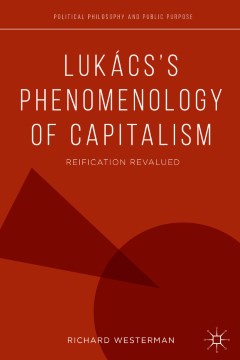Book | Chapter
Reality and representation in art
pp. 33-82
Abstract
Westerman argues that the basic conceptual framework of Lukács's later Marxian social theory was first developed in his so-called Heidelberg Aesthetics—his drafts of a philosophy of art, written at Heidelberg between 1912 and 1918, but forgotten and only published after his death. This chapter offers the most detailed account of these manuscripts in English. It contextualizes Lukács's argument within the reaction against psychologism, which included Hermann Lotze, Gottlob Frege, and Neo-Kantianism. Westerman identifies four significant sources of Lukács's thought, who serve to represent these broader intellectual trends: art historians Alois Riegl and Konrad Fiedler, and philosophers Edmund Husserl and Emil Lask. Finally, the chapter outlines the aesthetics Lukács developed, focusing on the concepts of the standpoint and the totality, and on the relation between subject and object—all of which were of pivotal importance in his social theory, and which emerge here for the first time.
Publication details
Published in:
Westerman Richard (2019) Lukács's phenomenology of capitalism: reification revalued. New York, Palgrave Macmillan.
Pages: 33-82
DOI: 10.1007/978-3-319-93287-3_2
Full citation:
Westerman Richard (2019) Reality and representation in art, In: Lukács's phenomenology of capitalism, New York, Palgrave Macmillan, 33–82.


